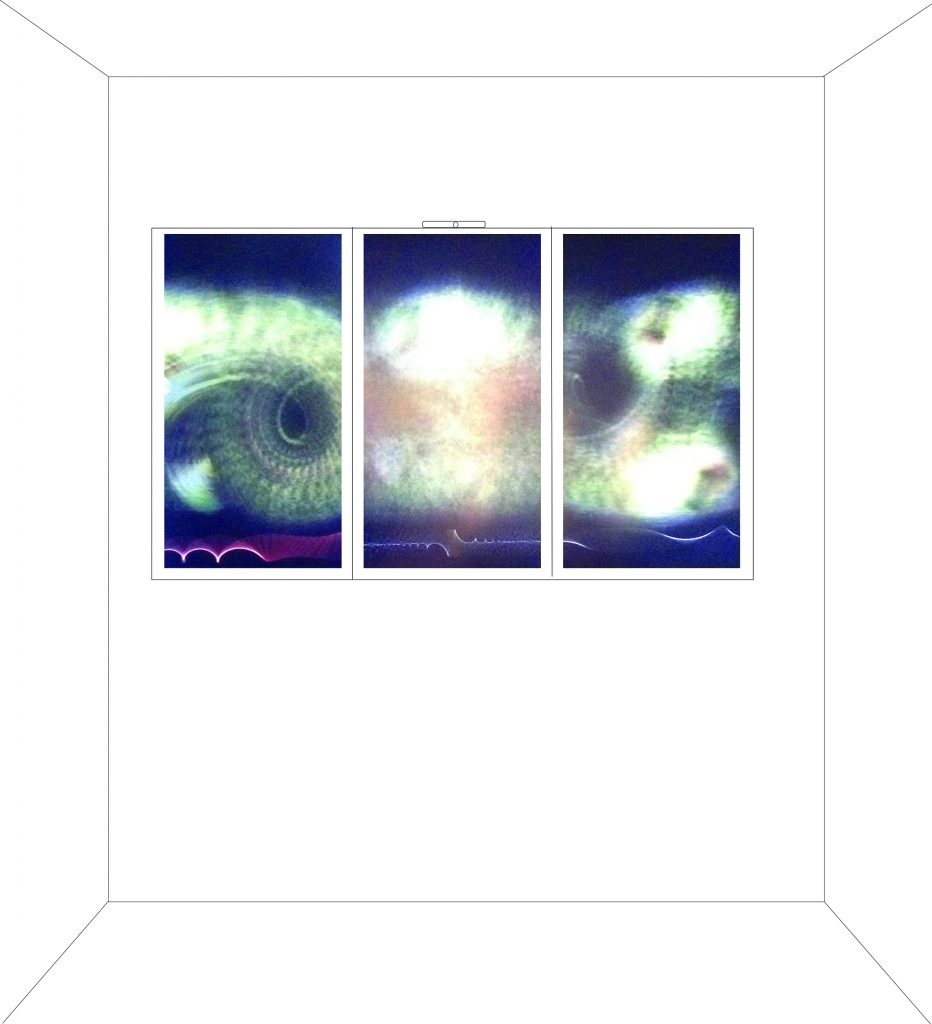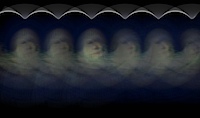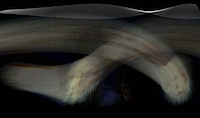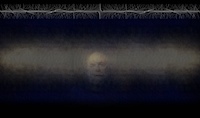The research project is looking for parallel universes that have evolved by working with concepts from Richard Feynman’s lecture on Photons – Corpuscles of Light and Fits of Reflection and Transmission – Quantum Behaviour.
The interactive artwork Multiverse visualises a parallel universe based on the diagrammatic presentation from Richard Feynman 1979 lectures where he demonstrates the probability of photons reflecting from the surface of a mirror (Trust 1979). Multiverse shows an individuals portrait as being analogous to the spin of a single photon at a frequency 475nm based on Feynman’s ‘probability amplitude’. In the installation, Multiverse reveals that all the possible alternative invisible quantum worlds are equally real and exist in parallel and are made visible via this work. The premise of the work reveals that photons do not merely encode all the information about an object but is also independent of an observer.
The concept for Multiverse uses a data image from the Atomic Force Microscope of a 7-nanometer scan of a mirrored silver substrate that acts as a filter for the live camera feed image of the viewer’s portrait. Each viewer’s real-time reflected portrait is analogous to single photons. The photon’s spin is mapped to reflect back to the viewer showing all of the representation not just the closest to the angle of incidence. The computer generates nearly two thousand versions of the viewer’s image that have an equivalence to Feynman’s ‘summing’ the angles of probability. The mathematics are processed to react to the ‘probability amplitude’ of the photons paths across the three LCD screens that acts as a metaphorical mirror. Multiverse reveals the photon’s spin, with the shortest axis being at the centre point. As the spin is visualised along the surface of the entire mirror, there are points where there is clarity in the coalescence of a multitude of reflected images spinning. The artwork reveals how the individual’s portrait reappears in a parallel world on the mirror’s surface.
Probability diagram paper presented at ISEA 2013, Sydney.
The screen grabs show evidence of experiments taking Feynman’s probability amplitude and exploring the possibilities of a parallel universe.
























